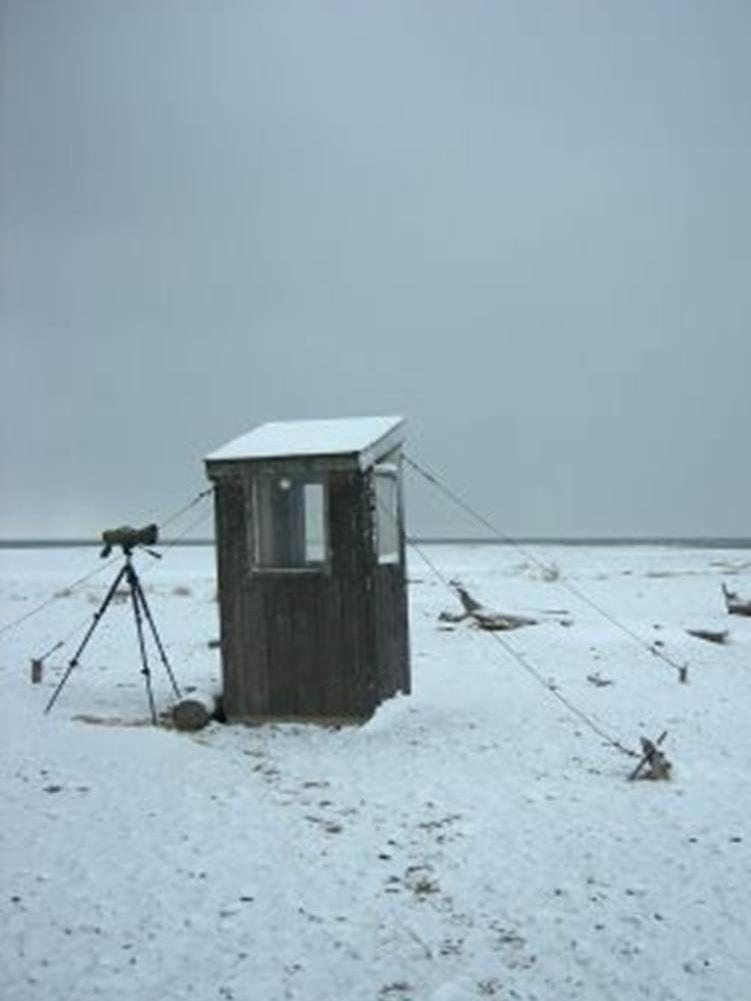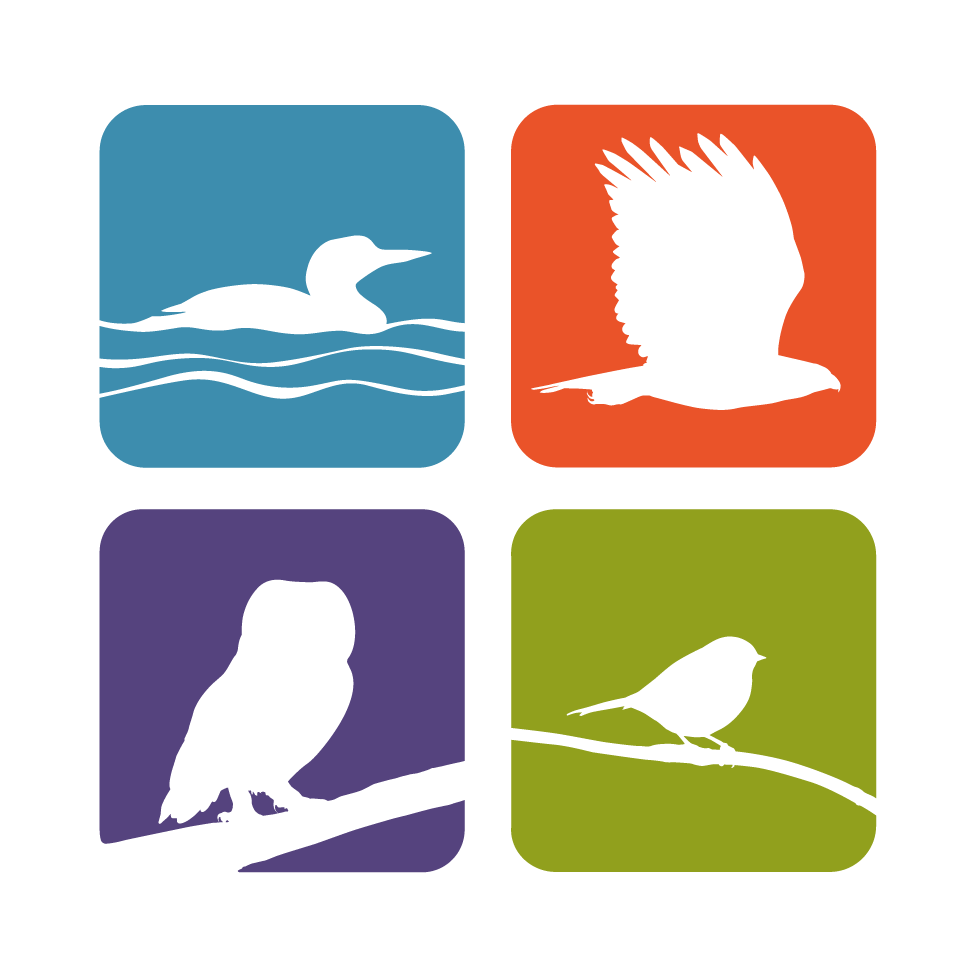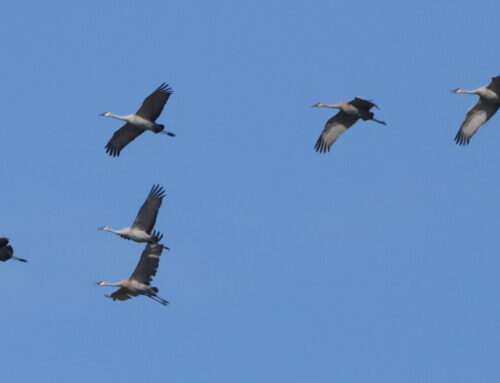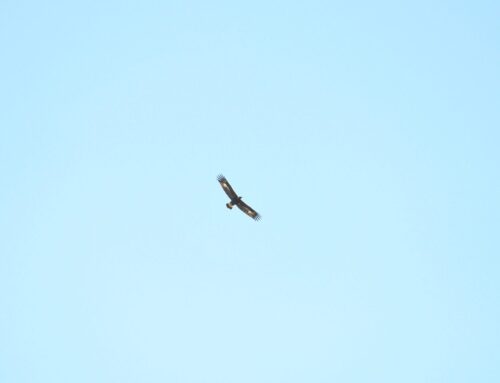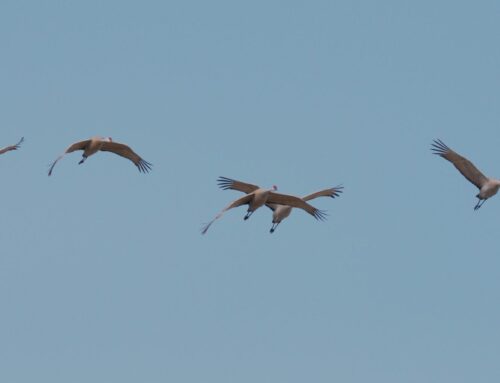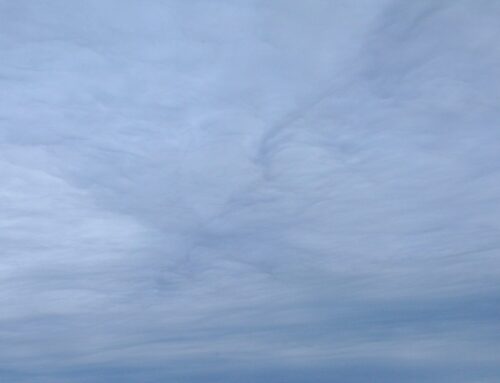By Louie Dombroski
Almost one week into the waterbird count, there is still little to report. There were some hopeful signs in March and early April with a few (very few) Canada Geese, Mallards, and Sandhill Cranes all reported from the hawk watch. On one visit in March, I climbed onto the ice hill bordering the shoreline and even spotted a Trumpeter Swan swimming in open water by the tip! Then a long period of north winds blew ice back into the bay and along the north shore, reducing the amount of nearby open water to a few bathtub-sized patches. It didn’t help when the opening day of the waterbird count on April 15 coincided with one of the region’s biggest April snowstorms ever.
An imminent change in the weather has my hopes up though, as we’re about to enter several days with temperatures above freezing and possibly even into the 50’s and even more importantly, some south winds, finally! The most recent new waterbird arrivals were a male Red-breasted Merganser displaying (possibly just practicing his display since I couldn’t see any others) in the open water off the tip on April 18 and a befuddled Great Blue Heron out on the ice on April 20.
Even in late spring years when the bay is choked with ice, there can be great birding. Spring 2014 was such a season, with very little waterbird migration going on at the point, when I went to the Tahquamenon River mouth with Skye Haas, Jonathan Lutz, and Alec Lindsay to see if there was anything in the way of web-footed birds swimming around in the patch of open water there on April 26. We found a few Common Loons and Common Mergansers, and before we left Skye spotted another loon flying toward Whitefish Point. Just after announcing that it looked “suspicious”, the loon circled back and splashed down onto the water with the others. The suspicions were warranted, as our views through the spotting scope showed it to be a Pacific Loon in full breeding plumage! We marveled at how well we could see through the scope such intricate details as the vertical narrow white stripes on its neck and note how its puffy-headed profile made its smaller beak look even smaller compared to the dagger-like bills of the larger Common Loons swimming nearby.
I think that by the time Spring Fling 2018 arrives, I won’t feel the need to reach back to prior years’ birding tales, and the reminiscing will be about birds seen in the upcoming week. Please stay tuned!
